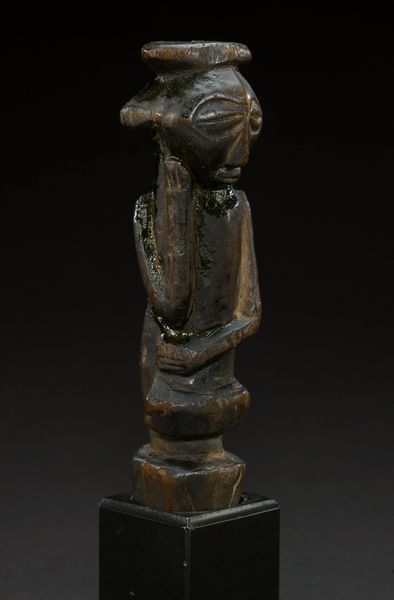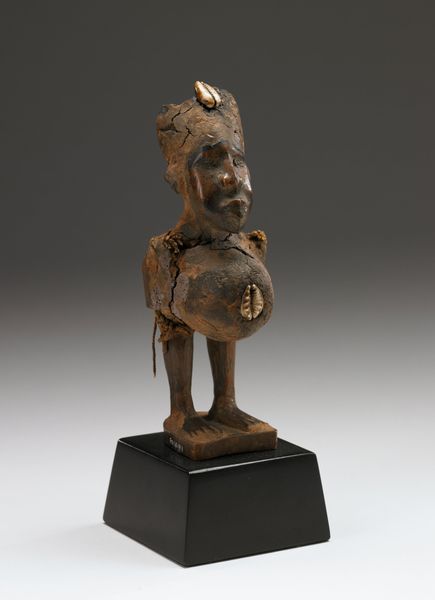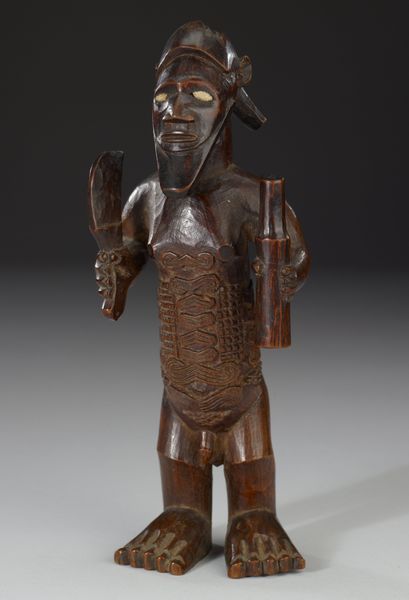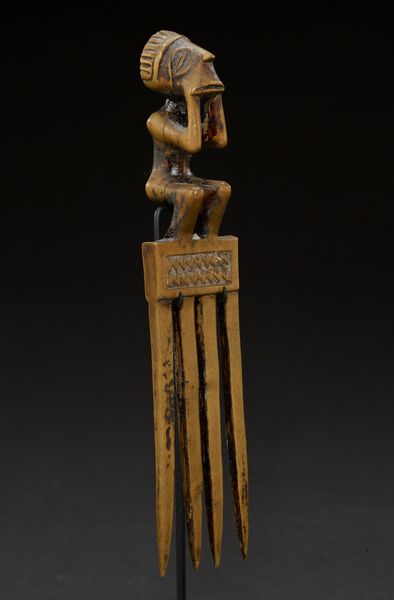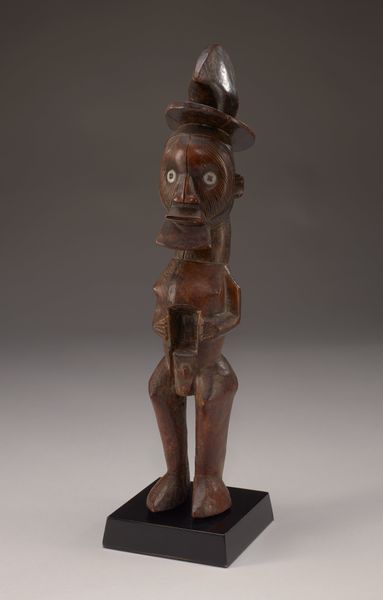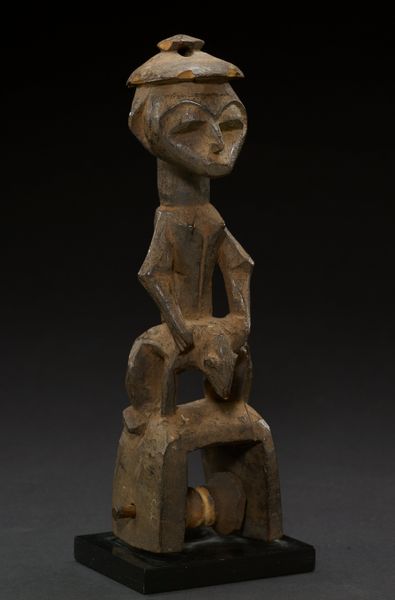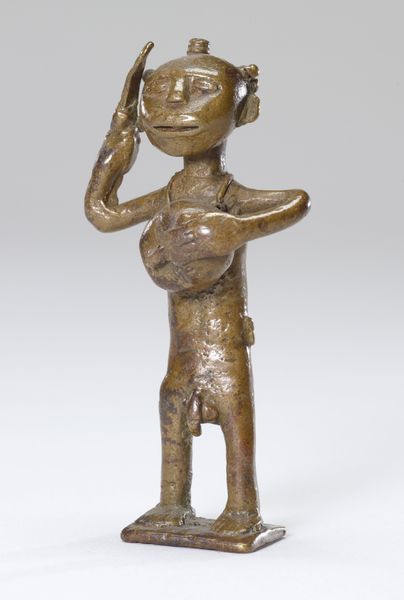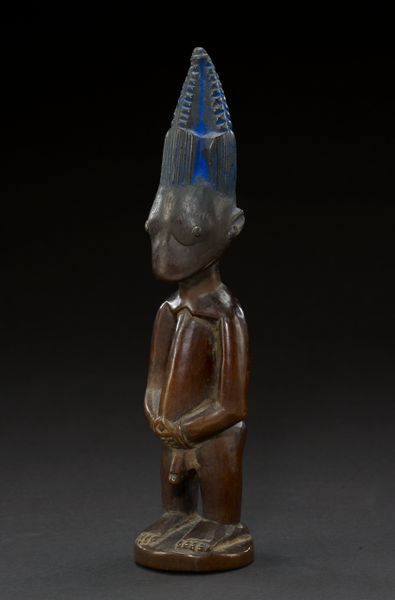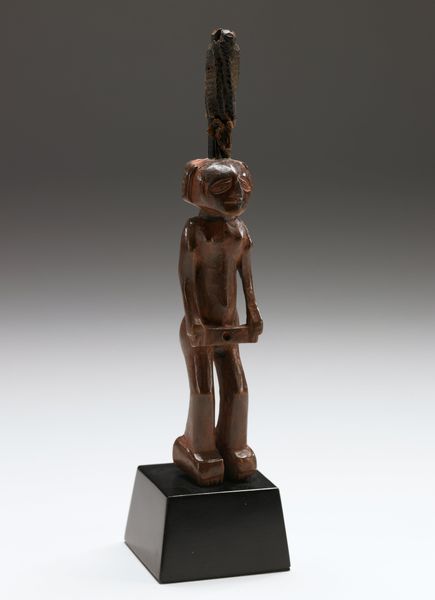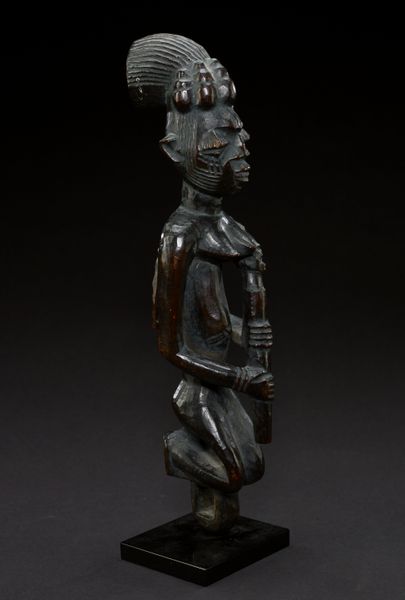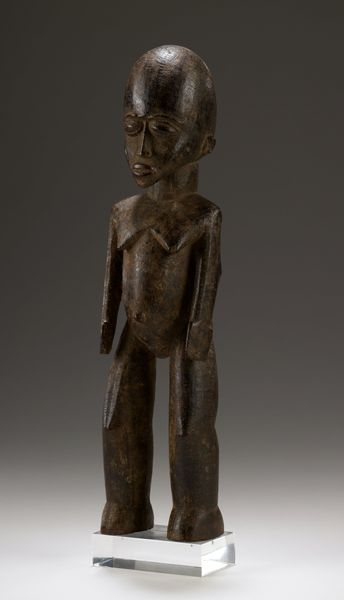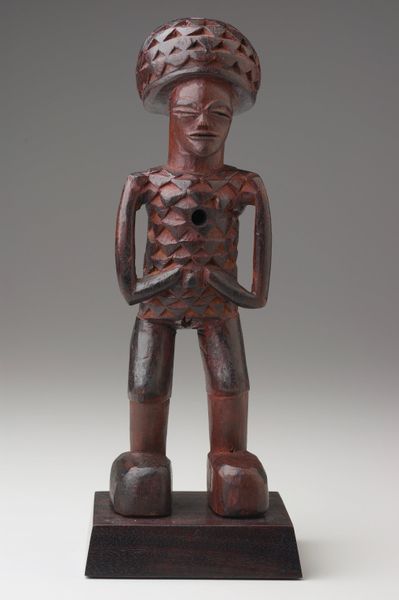
carving, sculpture, wood
#
portrait
#
african-art
#
carving
#
stone
#
sculpture
#
figuration
#
sculpture
#
wood
#
statue
Dimensions: 6 1/4 × 2 5/16 × 2 3/16 in. (15.88 × 5.87 × 5.56 cm) (including base)
Copyright: Public Domain
Editor: Here we have an intriguing wood sculpture called "Mortar," believed to be from the 20th century. It depicts a figure seemingly burdened by a mortar on its head. It’s at the Minneapolis Institute of Art, and I'm really struck by its somewhat mournful posture. What social function might this have served? Curator: That's an excellent observation. Considering this work historically, it's important to analyze what the “mortar” might signify within its original cultural context. Does it simply represent a burden? Or could it be connected to status or ritualistic practice? Often these sculptures played a key role in public ceremonies or were used as markers of social standing. The pose suggests a reflection on responsibility, possibly even forced labor, so who was likely exposed to such representation? Editor: I see. So, looking at it from a historical lens, the "mortar" becomes a symbol loaded with different meanings. Curator: Exactly! And it also begs the question: who made this? Was it commissioned, or created independently? The artwork's accessibility – its presence in a museum – inevitably changes its meaning from whatever function it may have originally held. What power structures made this acquisition possible? Editor: It really gives me a lot to think about the various contexts. What would we be missing without asking that questions? Curator: By not doing so, we would detach it from its history. The art risks becoming purely aesthetic and ignores its complex connection to historical and social reality. Editor: That gives me a much better understanding of the sculpture as not only a cultural product, but as a reflection of a particular society, and also how its reception can change drastically through different environments. Thank you. Curator: My pleasure. Examining these pieces critically helps reveal broader power dynamics!
Comments
No comments
Be the first to comment and join the conversation on the ultimate creative platform.

